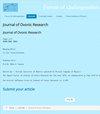通过固态反应路线合成的掺铜氧化锌纳米粒子在湿度传感装置中的性能
IF 0.9
4区 材料科学
Q4 MATERIALS SCIENCE, MULTIDISCIPLINARY
引用次数: 0
摘要
本研究考察了三种掺铜(1%)氧化锌纳米材料 CZ-1、CZ-2 和 CZ-3 的湿度感应特性。这些物质是通过 Cu2O 和 ZnO、CuO 和 ZnO 以及 Cu 和 ZnO 的固态相互作用产生的。三种颗粒样品分别在 700°C 下退火四小时后,进行了湿度感应测试。在室温下的整个相对湿度百分比(15-90%RH)范围内,可以观察到所有三种纳米材料的电阻都在稳步降低。对纳米材料颗粒进行了粉末 X 射线衍射仪和扫描电子显微镜分析,以确定其结晶度、结构相(晶体总结构)和表面形态。舍勒法以及威廉姆森和霍尔法都被用来确定 CZ-1、CZ-2 和 CZ-3 这三种样品的晶体尺寸。在 700°C 下退火的 CZ-3 样品的结晶尺寸最小(36 纳米),湿度敏感性也是三个样品中最高的。本文章由计算机程序翻译,如有差异,请以英文原文为准。
Performance of copper doped zinc oxide nanoparticles synthesized through solid state reaction route for humidity sensing device
In the current study, the moisture-sensing properties of three Copper (1%) doped Zinc Oxide nanomaterials, CZ-1, CZ-2, and CZ-3, are examined. These substances were created by solid-state interactions involving Cu2O and ZnO, CuO and ZnO, and, separately, Cu and ZnO. After four hours of annealing at 700°C for each of the three pellet samples, humidity-sensing tests were conducted. Throughout the whole range of relative humidity percent (15-90%RH) at room temperature, it was observed that the electrical resistance of all three nanomaterials reduced steadily. Powder x-ray diffractometer and scanning electron microscopy analyses were performed on the nanomaterial pellets to determine their crystallinity, structural phases (gross crystal structure), and surface morphology. Both the Scherer's approach and the Williamson and Hall's method were used to determine the crystallite size of the three samples, CZ-1, CZ-2, and CZ-3. The CZ-3 sample annealed at 700°C had the lowest crystallite size (36 nm) and the highest humidity sensitivity of the three samples.
求助全文
通过发布文献求助,成功后即可免费获取论文全文。
去求助
来源期刊

Journal of Ovonic Research
MATERIALS SCIENCE, MULTIDISCIPLINARY-PHYSICS, APPLIED
CiteScore
1.90
自引率
20.00%
发文量
77
期刊介绍:
Journal of Ovonic Research (JOR) appears with six issues per year and is open to the reviews, papers, short communications and breakings news inserted as Short Notes, in the field of ovonic (mainly chalcogenide) materials for memories, smart materials based on ovonic materials (combinations of various elements including chalcogenides), materials with nano-structures based on various alloys, as well as semiconducting materials and alloys based on amorphous silicon, germanium, carbon in their various nanostructured forms, either simple or doped/alloyed with hydrogen, fluorine, chlorine and other elements of high interest for applications in electronics and optoelectronics. Papers on minerals with possible applications in electronics and optoelectronics are encouraged.
 求助内容:
求助内容: 应助结果提醒方式:
应助结果提醒方式:


